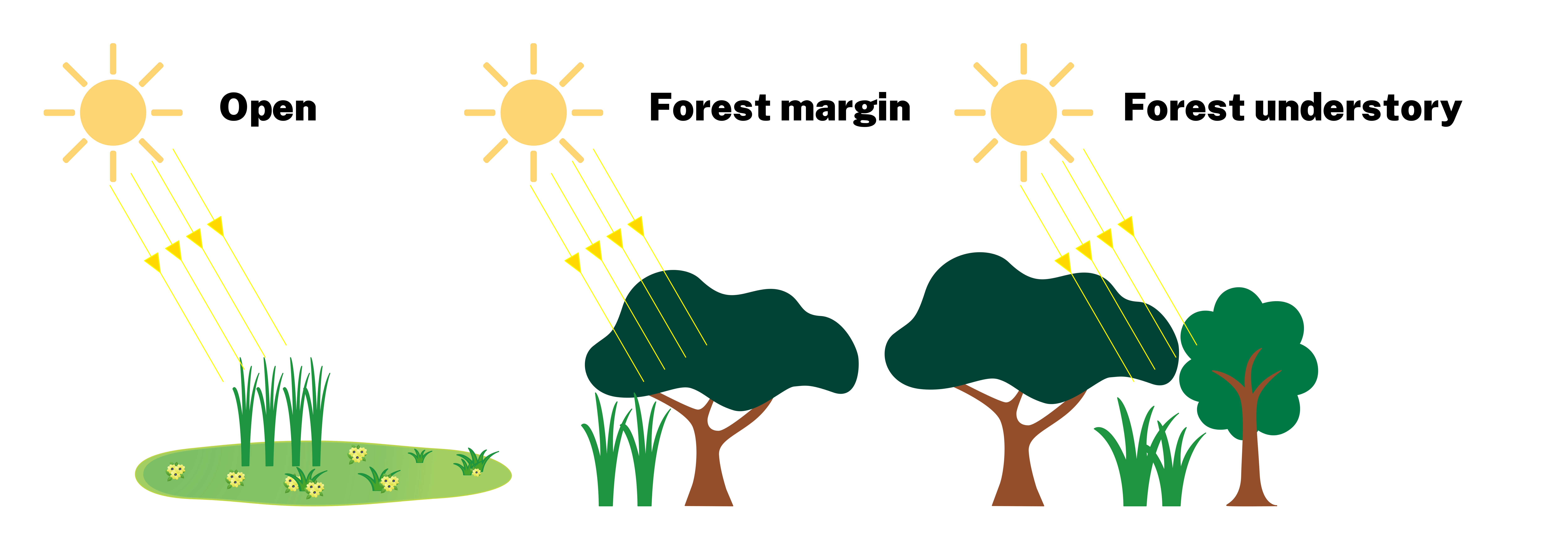Science
Related: About this forumGrass leaf shapes are influenced by light
Specific and interesting responses of grass leaf size and shape to habitat changes.
Gao Jianguo Sep 11, 2019
The changes in plant leaf size and shape in response to the environment is a core in ecology, as it is closely related to plant carbon assimilation and growth strategies, thus influencing productivity2. Though people are aware of the relationships between leaf size and temperature, and between precipitation and radiation on a global scale3,4, little is known about the specific responses of leaf size and shape to habitat changes.
Recently, Gallaher et al.1 found leaf shapes of these herbaceous plants are different, depending on whether they come from the forest understories, forest margins, or from open habitats1. In general, leaves from open habitats, which are exposed to more solar radiation and more arid climates, are smaller (Fig. 1). Thus, leaf size can be used to indicate its habitat type; for example, smaller and thicker leaves can often be found in disturbed forest margins and open habitats. This information has the potential to predict the ecological consequences of rapid changes in land use5.
Leaf width:length ratios, leaf areas, and absolute and relative leaf widths become larger as one goes from open habitats, to forest margins, to forest understories. Thus, leaf areas of leaves from under the forest or near the forest margin are substantially larger than those from open habitats (Fig. 1). There are no differences in leaf length among the three habitat types; moreover, leaf size and shape are not significantly different among photosynthetic types. Interestingly, the relationships between leaf area, the leaf width for the highest weekly solar irradiance (the higher the value, the stronger the radiation), and the mean annual moisture index (the higher the value, the more humid the environment), are opposite. Leaf areas and widths decrease with an increase in radiation or a reduction in humidity, especially for leaves in open habitats and forest understories. These relationships, on one hand, reflect the inherent negative correlation between radiation and humidity, and suggest the important role of habitats in determining the responses of leaf size and shape to radiation, e.g., when keeping radiation constant, leaf widths are found to decrease more in forest understories than that in open habitats. The patterns showed here imply that future climate change, especially radiation changes, may exert more influence on grasses within the forests, which is crucial for understanding leaf size changes in fragmented habitats.

Fig. 1. A diagram depicting the size and shape of herbaceous plants in different habitats shape by solar radiation. From left to right are images corresponding to open habitat, forest margin and forest understory, respectively. Leaves become larger and wider, showing the effects of solar radiation on leaf photomorphogenesis. Credit: Jianguo Gao.
More:
https://natureecoevocommunity.nature.com/users/54409-gao-jianguo/posts/53367-grass-leaf-shapes-are-influenced-by-light